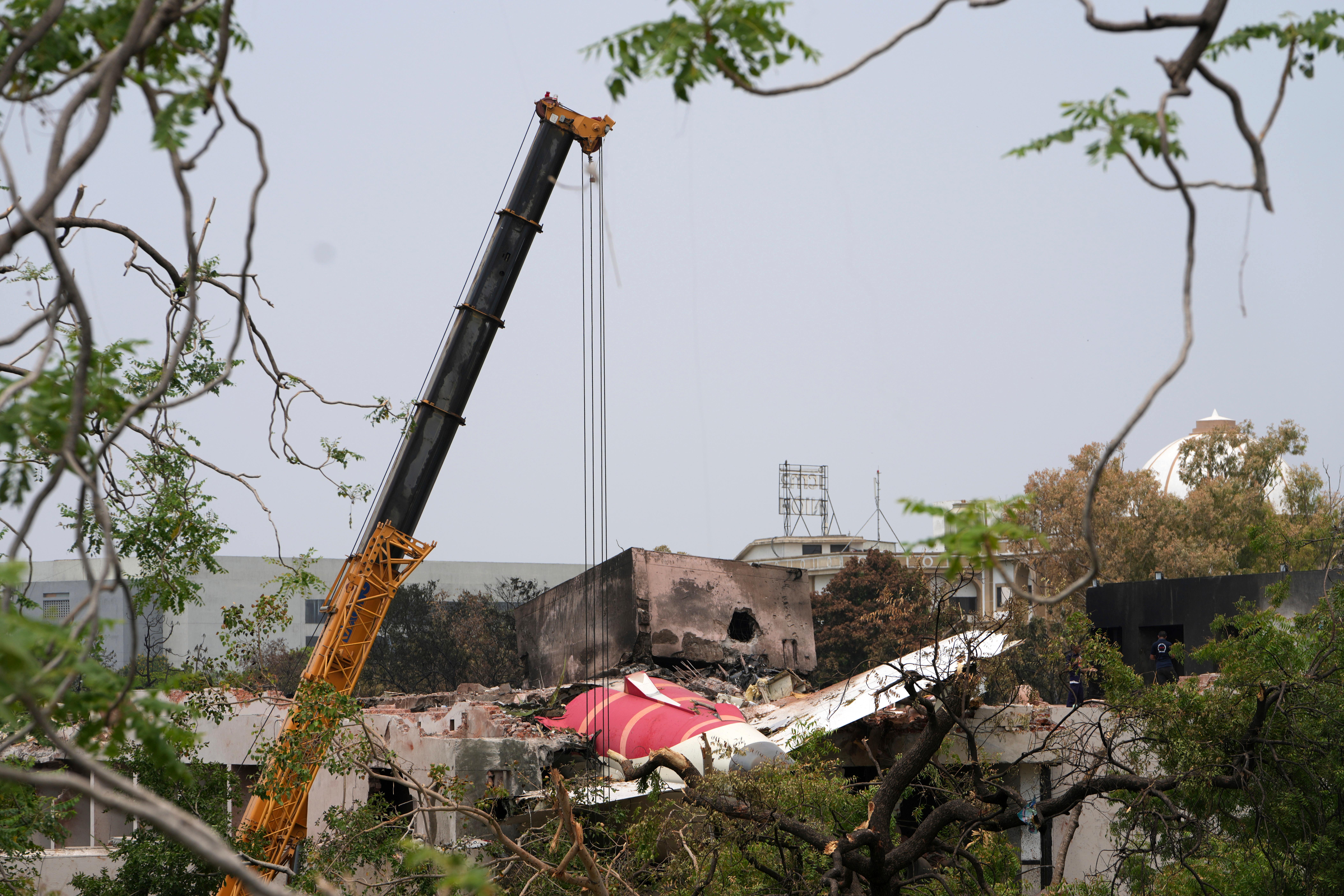Early findings of an investigation into the Air India crash last month have revealed the plane’s fuel switches were cut off after take-off, leaving victim’s families with more questions and seeking “justice and answers”.
The preliminary report from India’s Aircraft Accident Investigation Bureau (AAIB), published on Friday, said both of the plane’s fuel switches were moved to the “cut-off” position “immediately” after take-off, stopping fuel supply to the engine.
It included a harrowing transcript of a cockpit conversation between the pilots, one asks the other why he cut-off, before the other responded to say he did not.
Experts have since said it is not easy to “accidentally” cut off fuel switches.
The findings have left some families of victims questioning how the tragedy took place, and if it was avoidable.
Badasab Syed, 59, who lost his brother, 49-year-old IT professional Inayat Syed, his sister-in-law, and their two children in the crash, said he has just been left with more questions.
He told the BBC: “The report mentions the pilots discussing who turned off fuel and a possible issue with the fuel control switch. We don’t know what that means? Was it avoidable?”

The London Gatwick-bound flight crashed just moments after taking off from Ahmedabad airport on 12 June killing all but one of the 242 people on board the plane and about 19 on the ground.
The fuel switches are used to start the jet engines, shut them down or reset them in emergencies. Experts say they are the kind used on every flight, and designed so that this cannot easily “accidentally” happen.
After being cut-off, they were returned to their normal inflight position, which triggered an automatic engine relight and a thrust recovery procedure.
But despite the engines starting to recover, the cut-off had caused both to lose thrust, the AAIB report find, and the plane came down in a residential area close to the airport.
The Air India Flight 171 had been airborne for less than a minute.
In a statement, relatives of Akeel Nanabawa, his wife Hannaa Vorajee and their four-year-old daughter Sara Nanabawa, all from Gloucester, who died in the crash, described the report as “the first stepping stone” and said the family are still “working our way through the weight of our loss”.
They added: “Moving forwards, we require honesty, transparency, and an unwavering commitment to uncovering the full truth.

“We seek justice and answers, both of which are essential for us to find any sense of closure. We accept God’s fate, but knowing what happened will help ease our hearts and allow us to begin the long journey of healing.
“Above all, we hope that by pursuing the truth, no other family will ever have to endure the shock, uncertainty, and profound sorrow that we have lived through this past month.”
The cousin of sisters Dhir and Heer Baxi, who were flying home to London after surprising their grandmother for her birthday and died in the crash, said he was “not satisfied” by the report.
Ishan Baxi, who lives in Ahmedabad, said: “We’re still hoping for a more transparent and honest investigation that doesn’t shy away from addressing possible mechanical flaws or lapses in protocol to avoid future potential accidents.”
Air India stands in solidarity with the families and those affected by the AI171 accident. We continue to mourn the loss and are fully committed to providing support during this difficult time.
— Air India (@airindia) July 11, 2025
We acknowledge receipt of the preliminary report released by the Aircraft Accident…
He added: “I just hope the final report brings full clarity on what exactly failed and who’s accountable. It shouldn’t hide behind vague terms.
“More than anything, it should push for real changes so this never happens again.”
Director of aerospace and aviation at Cranfield University, Professor Graham Braithwaite, explained the fuel switches were designed so they cannot easily be “accidentally” turned off and pilots would generally run through a checklist before doing so, he said.
“For obvious reasons, the two switches are a distance apart, so not a huge distance, but enough that you couldn’t accidentally switch two when you’re trying to switch one.”

Prof Braithwaite said that if the switch had been moved by a person, that would have been a “very unusual thing to do” at below 1,000 feet.
The aircraft was about 11 years old, the fuel switches had been changed two years ago, and the crash was a “really, really unusual event”, he added.
A lawyer advising some of the families affected by the crash said the findings were “deeply concerning”.
Demetrius Danas, an aviation lawyer at Irwin Mitchell, said: “We’re continuing to speak with and advise families who’ve been affected by the Air India crash.
“Understandably, all they want is to be provided with answers.”

The only surviving passenger on the plane was Briton Vishwash Kumar Ramesh, who previously told The Sun it was a “miracle” he was alive but felt “terrible” he could not save his brother Ajay.
Some 169 Indian passengers and 52 British nationals were killed, making it one of the deadliest plane crashes in terms of the number of British fatalities.
If the final investigation takes more than a year to complete, an interim report would be issued on the anniversary of the crash, Prof Braithwaite said, adding that interim recommendations could be made at any time.
The preliminary report said that all crew members had been breathalysed on their arrival at Ahmedabad airport, which found they were “fit to operate the flight”.
No significant bird activity was spotted near the flight path and the aircraft started to lose altitude before crossing the airport perimeter wall.
Investigators have identified “components of interest for further examinations”, the report says.
An Air India spokesperson said: “We continue to fully cooperate with the Aircraft Accident Investigation Bureau and other authorities as their investigation progresses.
“Given the active nature of the investigation, we are unable to comment on specific details and refer all such inquiries to the AAIB.”
What are fuel switches and why do they matter in the Air India crash?
What is a ‘black box’ and what can it tell us about the Air India plane crash
Air India crash updates: Aviation authority say fuel switches were safe
Who were the pilots of doomed Air India flight?
Indian tennis player shot dead by her father as she cooked breakfast







